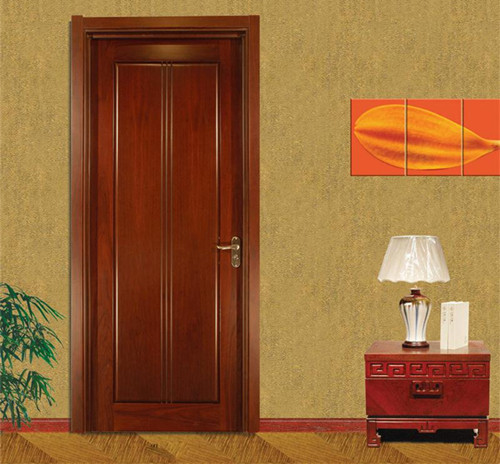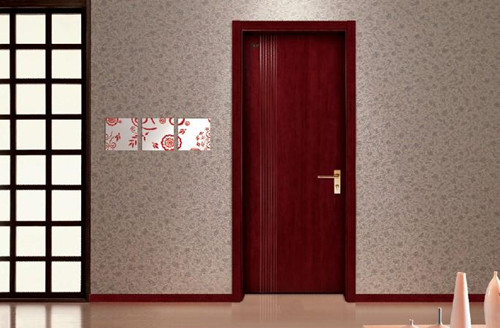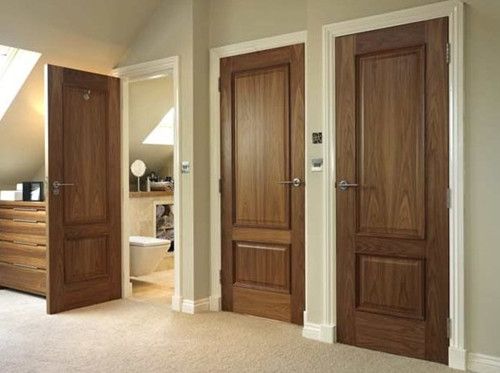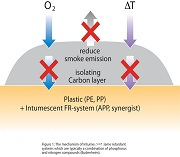Solid wood doors are one of the more used types of decoration in recent years, but the quality of wood determines the quality of the doors. Good solid wood doors are made of rosewood and teak. The material is hard and the texture is clear. It is difficult for ordinary consumers to distinguish the quality of wood with the naked eye. Therefore, it is necessary to purchase products from reputable manufacturers. Next Xiaobian introduced brand solid wood door recommendations and solid wood door features.

Brand solid wood door recommended
1, TATA
TATA is one of the top ten brands, and it has an affordable price/performance ratio. It is not an exaggeration to describe it at a reasonable price. In terms of quality, all wooden doors are made of solid wood doors and have first-rate technical equipment.
2, Maxim
Maxim is located in Chongqing. It also involves door and window crafts, handicrafts and supporting production of wooden doors. Maxim's wooden doors can stand out in the prosperous wood door industry. Whether it is price or quality, it has unique advantages and is also a good brand trusted by consumers.

3, panpan
Panpan mainly focuses on safety doors, so it is recognized by many consumers in the market and has a good reputation. As a pioneer of the Chinese wooden door industry, Panpan has always been adhering to its beliefs and providing consumers with security and confidence. Wooden door.
4, Mengtian
Dreamland’s competitiveness in China is still relatively large. Mengtian was founded in 1989. Although history is not long, it has occupied a very wide market and products have been recognized by consumers.
5, still
The company is mainly engaged in high-quality wooden doors. It has introduced foreign advanced wooden door production technology and equipment. It is very dedicated to details and makes every effort to create first-class wooden door home brands, so that consumers can rely on Shangao to enjoy more trust. The high quality home life. From the point of view of price, there are value-for-money and affordable prices that allow the average family to withstand the economy. The top ten brands of wooden doors are still awkward, making you more economical and affordable.

Solid wood door features
1, solid wood door texture cleaning, there is a good three-dimensional sense, and now more popular materials are mainly wood, red pine, Ash and so on.
2, solid wood door is not easy to deformation, it is a special drying process, and then processed through multiple processes. Most of the wood doors are made of precious wood, such as cherry, peach, walnut, gold teak, oak, etc. The finished product door has the characteristics of no deformation, corrosion resistance, no stitching, and heat insulation. . At the same time, solid wood doors have effectively played a role in sound insulation due to their good sound absorption.
3. The material of the solid wood door is mainly centered on the warm tone. The main component of the material is very strong in the absorption ability of the ultraviolet rays, and the unevenness of the surface of the wood forms a diffuse reflection of the light and reduces the fatigue and damage of the eyes.
Editor's summary: The brand solid wood door recommendation and the characteristics of solid wood doors are introduced here, and we hope to be helpful to everyone. If you want to know more about yourself, you can follow the information on this site.
Solid wood door interior solid wood door brand brand solid wood door
Product List
|
aluminium trihydrate (ATH) |
21645-51-2 |
|
magnesium hydroxide (MDH) |
1309-42-8 |
|
antimony trioxide (ATO) |
1309-64-4 |
|
Zinc borate |
1332-07-6 |
|
Melamine polyphosphate (MPP) |
218768-84-4 |
|
Melamine phosphate (MP) |
20208-95-1 |
|
Melamine Cyanurate(MCA) |
37640-57-6 |
|
68333-79-9 |
Introduction
The most common inorganic flame retardants are the hydroxides or aluminium and magnesium. Aluminium trihydroxide (ATH) is by far the most widely used Flame Retardant on a tonnage basis. It is inexpensive, but usually requires higher loadings in polymers of up to more than 60%, because the flame retardant mechanism is based on the release of water which cools and dilutes the flame zone. Magnesium hydroxide (MDH) is used in polymers which have higher processing temperatures, because it is stable up to temperatures of around 300 C versus ATH which decomposes around 200 C.

Fine precipitated ATH and MDH (grain size < 2um) are used in melt compounding and extrusion of thermoplastics like cable PVC or polyolefins for cables. For use in cable, ATH and more often MDH are coated with organic materials to improve their compatibility with the polymer. Coarser ground and air separated grades can be used in liquid resin compounding of thermosets for electrical applications, seats, panels and vehicle parts.
A number of other inorganic substances show flame retarding effects and are used in commercial applications. Most of them are used as synergists i.e. they enhance the performance of other flame retardants or they are used for specific effects like the suppression of smoke formation. For example, borates are used as mixtures of boric acids and borax as flame retardants for cellulose (cotton) and of zinc borate for PVC and other plastics like polyolefins, elastomers, polyamides, or epoxy resins. In halogen-containing systems, zinc borate is used in conjunction with antimony oxide, while in halogen-free systems it is normally used in conjunction with aluminium trihydroxide, magnesium hydroxide, or red phosphorus. In some particular applications zinc borate can be used alone. Boron containing compounds act by stepwise release of water and formation of a glassy coating which protects the surface.
Zinc compounds were initially developed as smoke suppressants for PVC (Zinc hydroxystannate). Later it was found that they also act as flame retardants in certain plastics mainly by promoting char formation.
Intumescent Flame Retardant systems expand to produce foams. They are used as coatings not only to protect combustible materials such as wood and plastics, but also steel structures in buildings, because steel loses its strength when exposed to high temperatures in a fire. The intumescent effect is achieved by combining an acid source like ammonium polyphosphate, a source of carbon, compounds which release noncombustible gases for blowing the foam on thermal decomposition and resin binders to stabilise the foam.

Expandable graphite is manufactured from flake graphite by treatment with strong acids like sulphuric or nitric acid. The acid is trapped in the crystal layers of the graphite ("intercalated"). When it is heated, the graphite starts to expand up to several hundred cm3 per gram, forming a protective layer for the polymer. Expandable graphite is used in plastics, rubbers (elastomers), coatings, textiles and especially in polymeric foams. To achieve an optimum flame retarding effect, the use of synergists like ammonium polyphosphate or zinc borate is often necessary. The black colour of graphite limits its applicability in some cases.
Nanocomposites have been gaining increasing attention since the late 1990s as potential new flame retardants. Nanocomposites
are polymer layered silicates based on aluminosilicate clay minerals like montmorillonite, composed of layers with gaps (gallery spaces) in between. These silicates have the ability to incorporate polymers. Research with nanocomposites has focused on plastics like polymethylmethacrylate (PMMA), polypropylene, polystyrene, and polyamides. Nanocomposites particularly prevent dripping and promote char formation. Therefore, they have been used as synergists in some polymer / flame retardant combinations. However, they require special processing and for the time being are not considered to become viable stand-alone flame retardants.
Other inorganic fillers like talcum or chalk (calcium carbonate) are sometimes denoted as flame retardants, but they do not specifically interact with the ignition process. On the contrary, simply by diluting the combustible polymer they reduce its flammability and fire load.
Inorganic Flame Retardant Additives, Inorganic Flame Retardant Polymers, Inorganic Flame Retardant Chemicals,Ammonium Polyphosphate
Shandong Novista Chemicals Co.,Ltd (Novista Group) , https://www.novistachem.com